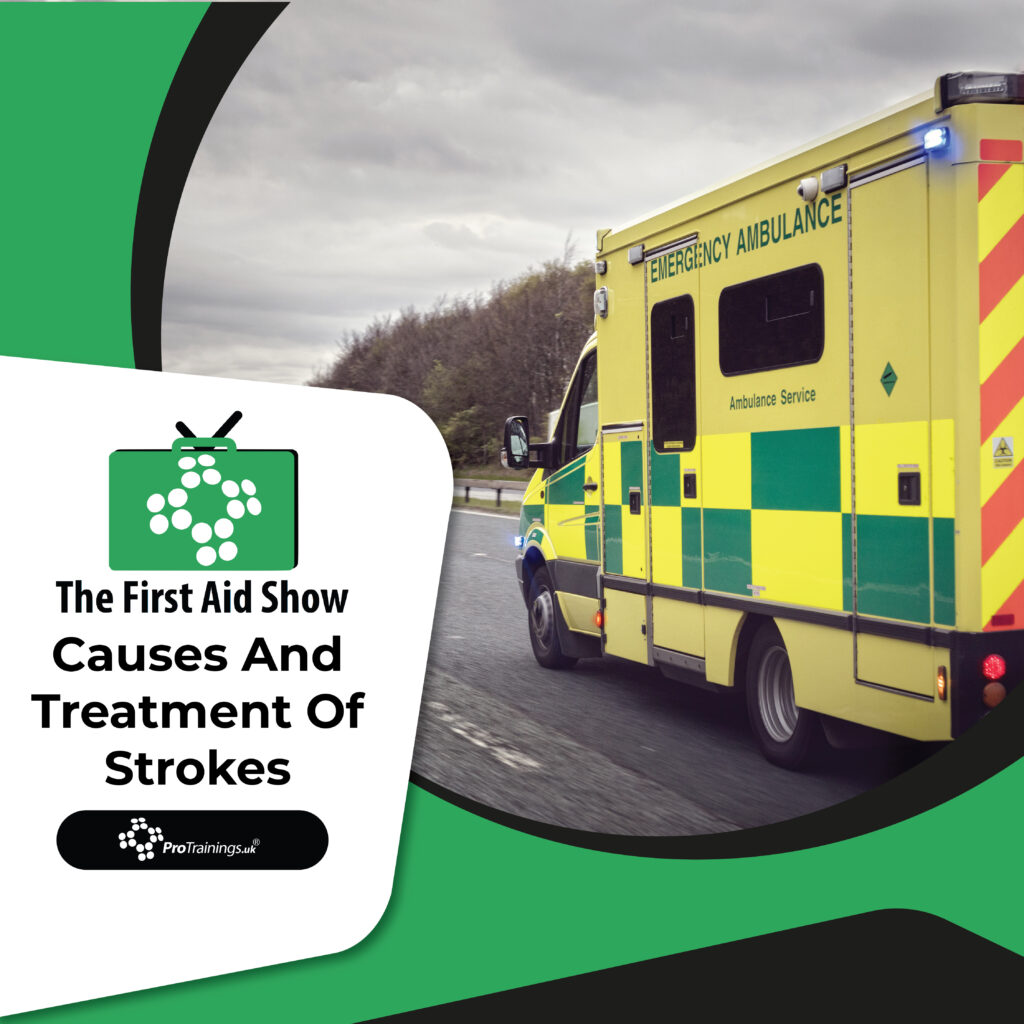Key Insights into the Causes and Treatments of Strokes
Welcome to this edition of the First Aid Show. Today, we’re zeroing in on the urgent need to identify strokes quickly and communicate effectively with Emergency Medical Services (EMS).
What Is a Stroke?
A stroke, often called a “brain attack,” is a severe medical condition that demands immediate action to reduce brain damage and enhance recovery chances. Strokes are primarily of two types: ischemic, caused by a clot blocking blood flow to the brain, and haemorrhagic, caused by bleeding into or around the brain.
Recognising Stroke Symptoms
Quick identification of a stroke is crucial and can be a lifesaver. Here’s how to spot the signs early using the F-A-S-T method:
- Face: Check if one side of the face droops when asked to smile.
- Arms: See if the person can raise both arms without one drifting downwards.
- Speech: Listen for slurred or strange speech when they repeat a simple sentence.
- Time: If these signs are present, call 999 immediately as every second counts.
Immediate Actions After Identifying a Stroke
Once you suspect a stroke, it’s vital to act fast:
- Secure the person’s safety by preventing them from walking or driving.
- Prepare for EMS arrival by compiling the patient’s medical history and medications.
- Inform close relatives and keep the patient calm, restricting unnecessary movement.
Addressing Transient Ischemic Attacks (TIAs)
TIAs, or mini-strokes, serve as critical warnings that a full stroke may follow. They require urgent medical assessment even if the symptoms are brief, to prevent more severe strokes.
Conclusion: The Importance of Rapid Response
Understanding the causes and treatment of strokes is vital for quick and effective response. Recognising and acting on stroke symptoms promptly not only saves lives but also significantly improves recovery outcomes. Always prioritize immediate medical assessment when dealing with any signs of stroke.


